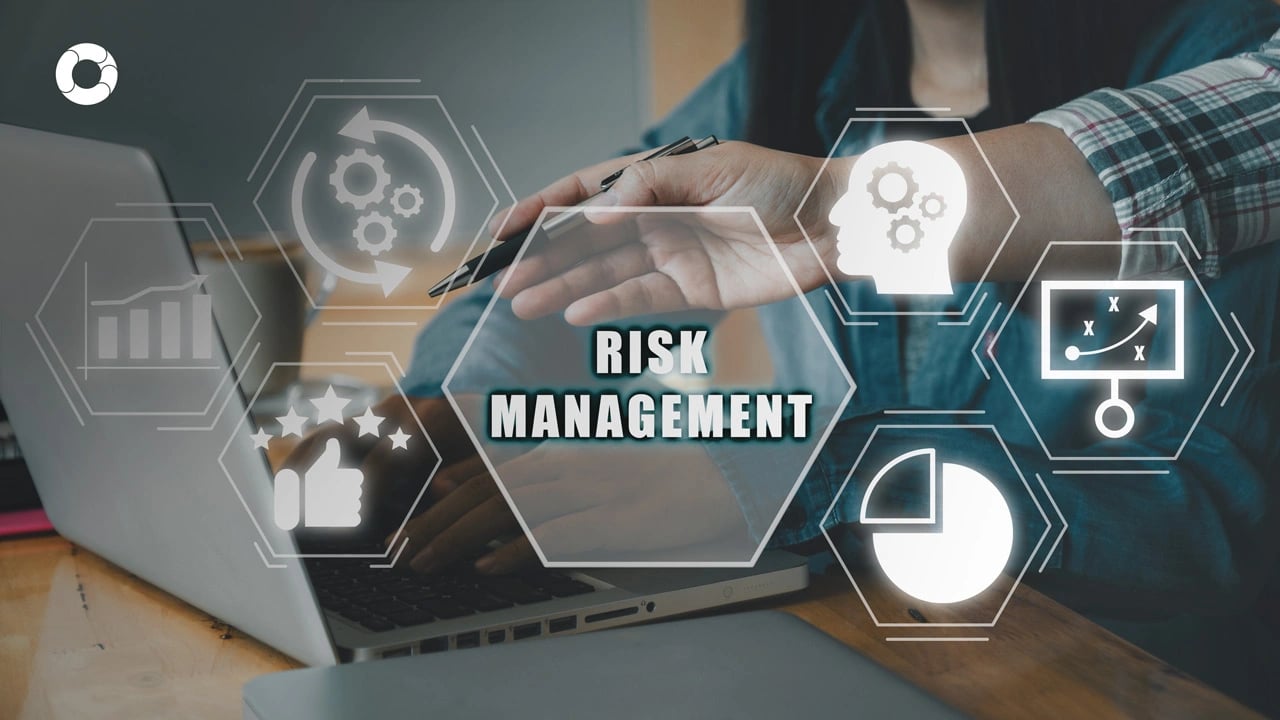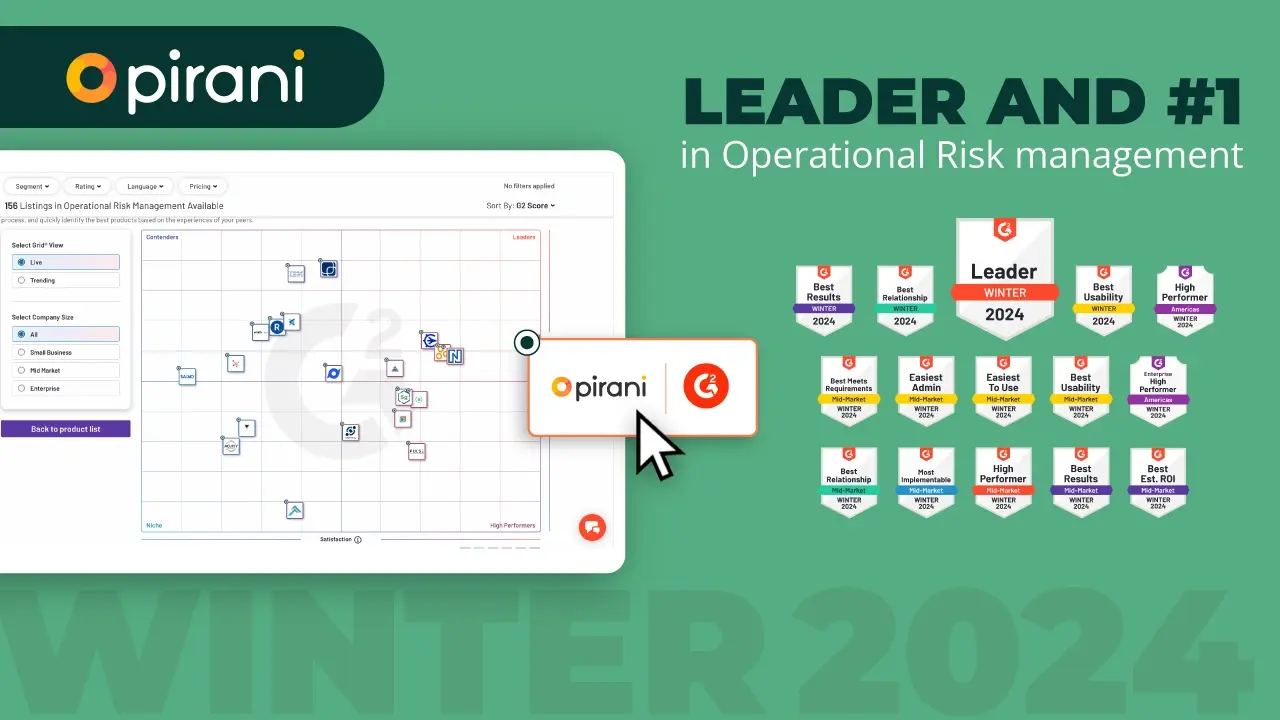Mastering KRIs: Unlock Risk Management Success

Understanding the importance of Key Risk Indicators (KRIs) in operational risk management is pivotal for businesses that navigate the complex landscape of modern risks. These indicators are crucial metrics that can offer a forward-looking perspective for your organization, enabling you to see and manage potential risks effectively. Unlike traditional reactive measures, KRIs provide an early warning system that can empower your company to take proactive steps toward risk mitigation, ensuring that risk exposure is minimized.
In the ever-evolving landscape of security and risk management, Gartner forecasts a significant upward trajectory in global spending, poised to hit $215 billion in 2024, marking a growth of 14.3% from the previous year. This underscores the increased prioritization of robust risk management strategies and security measures.
The strategic use of KRIs can significantly enhance your organization's ability to anticipate changes in the risk landscape, from shifts in regulatory changes to emerging cybersecurity threats. His proactive stance not only safeguards your company’s operational integrity but also contributes to sustained customer satisfaction and stakeholder trust. Moreover, integrating KRIs into the risk management strategy transforms risk assessment from a static checklist into a dynamic, predictive process, guiding decision-making toward more resilient and adaptive business practices.
In this article, we’ll delve into the intricacies of KRIs, exploring their role in identifying and managing operational risk, the criteria for selecting the right KRIs for your organization, and the best practices for their implementation. Furthermore, we’ll examine how leveraging the right technology can optimize KRI tracking and analysis, enhancing risk management efficiency.
Understanding KRIs: Your Navigation Tools in Risk Management
In 2023, the United States witnessed over 3,025 data compromise incidents. These unsettling events impacted over 353 million individuals, encompassing data breaches, leakages, and exposures. Despite the distinct nature of each incident type, they shared a critical similarity: the unauthorized access of sensitive information by threat actors, underscoring the vital need for enhanced data protection measures.
Source: Statista
KRIs are specialized metrics that provide an early warning of potential risks, allowing your business to anticipate and mitigate threats proactively. Unlike general business metrics, KRIs are uniquely designed to forecast potential risks, acting as navigational aids that guide strategic decision-making and risk preparedness.
KRIs vs. KPIs
While both KRIs and KPIs (Key Performance Indicators) are essential metrics for any organization, they serve distinct purposes. KPIs measure performance against business objectives, tracking everything from customer satisfaction to revenue growth. On the other hand, KRIs focus on risk identification trends and risk exposure that could potentially disrupt operations in the future. This predictive nature makes KRIs invaluable for risk management, offering a clear distinction from the retrospective analysis provided by KPIs.
The Early Warning Advantage
KRIs help in the early detection of different types of risks, allowing your organization to initiate risk mitigation strategies well in advance of potential disruptions. By monitoring specific risk indicators, you can make informed and timely decisions to adapt the approaches, safeguarding against losses and maintaining operational integrity. This forward-looking capability underscores the critical role of KRIs in enhancing operational risk management efficiency.
Boosting Organizational Resilience Through KRIs
Adopting KRIs not only aids in preventing potential issues but also contributes to your organization’s overall resilience and performance. Continuous monitoring and analysis of KRIs can enable your risk management teams to prioritize and respond to changes dynamically, fostering a culture of agility and innovation. Consequently, KRIs are a cornerstone of effective enterprise risk management (ERM), bolstering your company’s ability to navigate emerging risks and seize growth opportunities.
Selecting the Right KRIs for Your Organization
Selecting the right KRI is pivotal in fortifying your company’s risk management strategy. The most effective KRIs are those that not only reflect the unique risk profile of your business but also align with your overall business objectives and risk appetite.
KRI Selection Criteria
The selection of KRIs should be a thoughtful process guided by several critical criteria:
- Relevance: A KRI must directly relate to your business's core operations and strategic objectives, ensuring that it accurately reflects the challenges and risks your company faces. For instance, a tech company might prioritize cybersecurity risks, while a manufacturing firm focuses on supply chain disruptions.
- Predictive Value: The ability of a KRI to forecast potential issues before they become problematic allows your risk management team to take preemptive action. This could mean adjusting policies to anticipate regulatory changes or reinforcing IT security ahead of predicted cybersecurity threats.
- Quantifiable: A KRI must be measurable in clear, quantifiable terms. This allows consistent tracking over a period of time and enables the risk management team to set specific thresholds that trigger action. Quantifiability ensures that risk assessments are based on data rather than subjective judgment, providing a solid foundation for decision-making.
- Actionable: A KRI's ultimate value lies in its ability to inform action. When a KRI signals a potential risk, it should be clear how the organization can respond to mitigate that risk. This means KRIs should be directly tied to risk mitigation strategies, enabling your organization to adjust its operations in response to KRI alerts.
- Adaptability: The risk environment is constantly evolving, and so should your KRIs. As new risks emerge and your business grows, your set of KRIs must be reviewed and revised to remain relevant. This adaptability ensures that your risk management strategy stays aligned with current and future risk profiles, maintaining its effectiveness over time.
Common KRIs Across Industries
The application of KRIs varies significantly across different sectors, reflecting industry-specific risks and operational focuses. Here are some examples of common KRIs used in various industries:
- Finance: For financial institutions, loan default rates can be a crucial KRI, indicating the health of credit portfolios and potential financial risks. Market risk indicators might include volatility measures or interest rate changes affecting investment positions. Compliance breach counts are also vital, as they can lead to significant regulatory fines and damage to reputation.
- Healthcare: In healthcare, patient readmission rates can signal quality of care issues, potentially impacting patient satisfaction and financial performance. Medication and medical equipment error rates are critical for patient safety and reflect the effectiveness of clinical processes. Cybersecurity threats are increasingly relevant, with data breaches potentially compromising patient data and trust.
- Manufacturing: Manufacturers might focus on supply chain disruption indicators to foresee and navigate supply chain vulnerabilities, especially in a globalized economy. Equipment failure rates can predict production downtime and maintenance needs. Safety incident rates highlight workplace safety and operational risk, affecting efficiency and regulatory compliance.
- Technology: For tech companies, data breach frequency is a prime KRI, as security breaches can have far-reaching effects on customer trust and regulatory compliance, such as ISO 31000. System downtime incidents affect service reliability, while client satisfaction metrics help gauge the overall health of product and service offerings, influencing retention and growth.
Best Practices for KRI Implementation
Successfully integrating KRIs into your risk management process involves more than just selecting the right metrics. It requires a strategic approach that ensures these indicators can effectively guide your organization in identifying, assessing, and mitigating the risks. Let's take a look at some of the essential strategies and tips for KRI implementation that can enhance your risk management strategy.
Strategies for Integrating KRIs into Risk Management Processes
- Align KRIs with Strategic Objectives: Ensure your KRIs align with your organization’s strategic goals and risk appetite. This alignment can ensure that the KRIs you monitor are relevant to the areas where your business is most vulnerable and where risk management efforts can have the most significant impact.
- Incorporate KRIs into Regular Reporting: Integrating KRIs into your regular reporting mechanisms, such as dashboard updates or executive summaries, ensures that key stakeholders are consistently informed about the risk landscape. This regular reporting fosters a culture of risk awareness and helps in making informed decisions.
- Educate and Train Your Team: For KRIs to be effective, everyone involved in the risk management process needs to understand what each KRI means and how changes in these indicators affect the organization. Regular training sessions can help ensure that your team knows how to interpret KRI data and understand the action plan required when thresholds are breached.
Tips on Monitoring KRIs and Adjusting Strategies
- Set Thresholds and Triggers: Establish a clear threshold for each KRI that signals when action is needed. These triggers should prompt a review of risk mitigation strategies and, if necessary, adjustments to the approach based on the severity of the risk indicated.
- Use Technology to Streamline Monitoring: Automate and monitor KRIs by leveraging the right risk management software. Automation can provide real-time alerts when KRIs approach or exceed established thresholds, enabling quicker response to emerging risk events.
- Review and Adjust KRIs Periodically: The risk environment is dynamic, with new risk trends and emerging risks constantly arising. Regularly review your set of KRIs to ensure they remain relevant and adjust them as your business evolves and new threats emerge. This continuous improvement cycle ensures your risk management efforts align with the current risk landscape.
Leveraging Technology for KRI Optimization
In the digital era, the effectiveness of your risk management strategy increasingly relies on the technology you employ. Pirani stands out as a cutting-edge solution designed to streamline KRI tracking and analysis, offering features that significantly enhance risk management efficiency and effectiveness.
Streamlining KRI Tracking and Analysis
Pirani simplifies the complex process of KRI tracking by automating data collection and analysis. This automation allows for real-time monitoring of risk trends, ensuring that your risk management teams are always aware of the current risk landscape. By providing a centralized platform for risk data, Pirani makes it easier to aggregate and interpret KRI data across different business units, fostering a holistic approach to risk management.
Key Features Supporting Effective KRI Management
- Automated Alerts: Pirani’s automated alert system notifies relevant stakeholders when KRIs breach predetermined thresholds. This feature is crucial for immediate action against potential risks, ensuring rapid response to safeguard your company’s interests.
- Customizable Dashboards: With customizable dashboards, you can tailor your view to focus on the KRIs most relevant to your specific risk appetite and management needs, enhancing your decision-making process.
- Comprehensive Reporting Tools: Pirani offers comprehensive reporting features that enable the creation of detailed reports on KRI performance and high-risk exposure. These reports are invaluable for risk assessment and communicating the level of risk status to the board of directors and key stakeholders.
- Cybersecurity Risk Management: Addressing the critical need for information asset protection, Pirani’s cybersecurity asset management can equip your organization to safeguard the confidentiality, integrity, and availability of your company data. Complying with national and international security standards, this feature can help manage information security risks effectively, ensuring data security and regulatory compliance.
- Regulatory Compliance Assurance: Pirani aids in navigating the complex landscape of legal and regulatory obligations. By identifying and managing non-compliance risks, Pirani’s compliance management software helps avoid penalties and operational setbacks, ensuring adherence to applicable laws and regulations through comprehensive compliance tools.
- Fraud Mitigation: With a focus on Anti-money Laundering and combating fraud, Pirani introduces specialized tools for detecting and managing money laundering and terrorist financing risks. These tools facilitate identifying suspicious activities, streamlining control processes, supporting reporting, simplifying anti-money laundering compliance, enhancing your organization’s protective measures against fraud and financial crimes, and ensuring compliance with international compliance such as Basel III.
Benefits of Automating KRI Reporting
Automating KRI reporting with Pirani not only saves time but also increases accuracy. Manual data collection and reporting are prone to errors and can be time-consuming. Automation ensures that reports are generated consistently and accurately, providing timely insights that are crucial for effective risk mitigation.
Real-Time Risk Monitoring and Response
One of the most significant advantages of leveraging Pirani is the capability for real-time risk monitoring. This immediate insight into the risk landscape allows organizations to respond swiftly to potential threats, minimizing the impact on operations. Real-time monitoring supported by Pirani’s technology ensures that your business can maintain a proactive stance in risk management efforts rather than take damage control measures after the incident occurs.
Elevate Your Risk Strategy with Pirani
KRIs serve as the cornerstone for developing a proactive risk management strategy, enabling your organization to anticipate challenges before they escalate into a crisis. Pirani offers a suite of features specifically designed to enhance the efficiency and effectiveness of KRI management.
From automated alerts that ensure timely responses to emerging risks to customizable dashboards that provide at-a-glance insights into your organization’s risk posture. Pirani streamlines the complex process of risk monitoring and management. Integrating Pirani into your risk management strategy not only offers a comprehensive solution for tracking and analyzing KRIs, but it also aligns with national and international standards, ensuring your organization remains ahead of the curve in risk preparedness and compliance.
Embrace the power of technology to optimize your KRI strategy with Pirani and learn how it can transform your approach to risk management and elevate your organizational strategy.
Remember, in the dynamic of the ever-evolving business world, being prepared isn’t just an advantage–It’s a necessity. Take the first step towards enhanced risk mitigation with Pirani today!
You May Also Like
These Related Stories

Navigating Risk Management in Banking: A Complete Guide

5 tips for avoiding financial fraud

Unraveling Information Security Management Complexities

Importance of key indicators in risk management

Risks that may arise in an internal audit


No Comments Yet
Let us know what you think